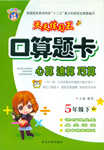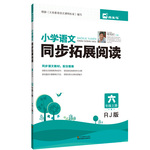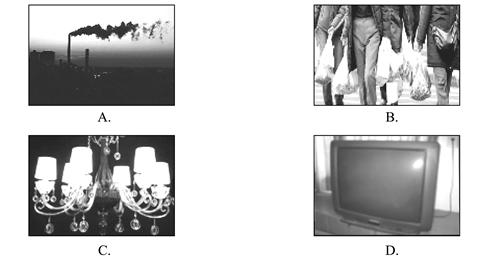
282. Our earth, one planet of the solar system, is only a very small part of the__________.
A. universal B. university C. universe D. Union
 口算心算速算应用题系列答案
口算心算速算应用题系列答案 同步拓展阅读系列答案
同步拓展阅读系列答案科目:高中英语 来源:2008年普通高等学校招生全国统一考试全国卷Ⅰ英语试题 题型:阅读理解
本文介绍了美国著名的生物学家Edward Wilson 的著作The Future of Life中的一些有关如何开发、利用和保护自然资源的情况。
Edward Wilson is America’s, if not the world’s, leading naturalist. In The Future of Life, he takes us on a tour of the world’s natural resources(资源). How are they used? What has been lost? What remains and is it able to continue with the present speed of use? Wilson also points out the need to understand fully the biodiversity(生物多样性)of our earth.
Wilson begins with an open letter to the pioneer in environment (环境) protection, Henry David Thoreau. He compares today’s Walden Pond with that of Thoreau’s day. Wilson will use such comparisons for the rest of the book. The problem is clear: man has done great damage to his home over the years. Van the earth, with human help, be made to return to biodiversity levels that will be able to support us in the future?
Biodiversity, Wilson argues, is the key to settling many problems the earth faces today. Even our agricultural crops can gain advantages from it. A mere hundred species(物种) are the basis of our food supply, of which but twenty carry the load. Wilson suggests changing this situation by looking into ten thousand species that could be made use of, which will be a way to reduce the clearing of the natural homes of plants and animals to enlarge farming areas.
At the end of the book, Wilson discusses the importance of human values in considering the environment. If you are to continue to live on the earth, you may well read and act on the ideas in this book.
【小题1】 We learn from the text that Wilson cares most about ______
| A.the environment for plants |
| B.the biodiversity of our earth |
| C.the wastes of natural resources |
| D.the importance of human values |
| A.Twenty. | B.Eighty. | C.One hundred | D.Ten thousand. |
| A.learn how to farm scientifically |
| B.build homes for some dying species |
| C.make it clear what to eat |
| D.use more species for food |
| A.a description of natural resources |
| B.a research report |
| C.a book review |
| D.an introduction to a scientist. |
查看答案和解析>>
科目:高中英语 来源:2010年河北省冀州中学高一年级期末考试英语卷 题型:阅读理解
Are you ready to do your bit to stop global warming? On Saturday, March 29, you will have a chance-to tell Toronto and the entire world that you are devoted to doing your part.
You can do it by turning off your lights during Earth Hour, from 8 p.m. to 9 p.m. Started last year by the World Wildlife Fund in Sydney, Australia, Earth Hour this year is going international, with 17 cities signed up so far, including Toronto.
The challenge for us Torontonians will be to show we are as devoted to fighting global warming as Sydneysiders were last year. Of course, one hour of darkness isn't going to stop global warming. But the thinking behind Earth Hour is that it gets people personally involved(加入). Besides giving people a chance to show their concerns over climate change, the goal is to get them to start changing their wasteful habits. Did you know, for example, that your electronic devices(设备) that you think you've turned off are still drawi ng power if you leave them plugged in?
ng power if you leave them plugged in?
If you want to make a difference, sign up today and promise to turn off your lights when Earth Hour arrives on March 29. Persuade others to do their part. Start to think about changes that can be made in your home and your workplace that wil l cut down on waste and greenhouse gas.
l cut down on waste and greenhouse gas.
【小题1】What can be the best title for the passage?
| A.A Chance to Help Save the Earth | B.A Chance to Help Prevent Pollution |
| C.An Hour to Fight Against Bad Habits | D.An Hour to Keep Climate Unchanged |
| A.Sydney | B.Toronto | C.the world | D.the 17 cities |
| A.sense the danger | B.make a promise |
| C.perform their duties | D.show their value |
 |
查看答案和解析>>
科目:高中英语 来源:2010年靖安中学高二下学期期末考试英语卷 题型:阅读理解
Our sun is a star, and nine worlds move round it. Worlds like these are planets (行星).
But there are other stars, other suns. Not only thousands of them, but millions of them. Do different stars have planets? We can see the planets round our own sun. But we haven’t seen any more. The stars are too far away from us. Stars give out (发出)light, but the planets don’t have any light of their own. So we can’t see them. They’re too far, and too dark.
Still, we can tell that some stars have planets. While a big planet goes round, it pulls its star to one side. And sometimes we can see this, Then we know that the star has a planet.
For example, Barnard’s Star(巴纳德星)is a small red star. And it is the quickest star in the universe. But sometimes it moves slower, and then quicker again. We have know Barnard’s Star for many years, and now we are sure it has a planet.
【小题1】A star is a large body in the universe.it________.
| A.moves round our sun | B.has light of its own |
| C.can also be called a world | D.both B and C |
| A.The earth is one of sun’s worlds | B.There are millions of suns in the universe. |
| C.The worlds are very bright. | D.Some stars have planets |
| A.most stars | B.any other star |
| C.its planet | D.the planets round the sun |
| A.Sometimes they see that the planet pulls the star to one side and makes it move slower . | B.The planet is shining. |
| C.The planet is next to our earth. | |
| D.The planet is a red one. |
查看答案和解析>>
科目:高中英语 来源:2011届四川省南充高中高三上学期第四次月考英语卷 题型:阅读理解
Accidents happen, but when they destroy the delicate balance of nature and cause the whole world to suffer, they become disasters, and we should do all we can to prevent them from happening again.
Bhopal chemical leak, December 1984, Bhopal, India
An explosion in the Union Carbide chemical plant in Bhopal, India, released a deadly gas called methyl (甲基) isocyanate(异氰盐酸), which is used to make pesticides. The gas formed a cloud that killed 2500 people; another 50000- 100000 people became ill. Trees and plants in the area became yellow and brittle. The explosion was caused by a mechanical failure that was not noticed in time to stop it.
Exxon Valdez oil spill, March 1989, Alaska, U.S.
On March 24, 1989, 11 million gallons of crude oil spilled into Prince William Sound from the tanker Exxon Valdez when its hull hit a reef and tore open. The oil, which is not yet cleaned up after billions of dollars have been spent and the millions of birds, fish, and other wildlife have died, was caused by human error and could have been avoided.
Chernobyl, April 1986, USSR
At 1:23 A.M. on Saturday, April 26, 1986, the reactor blew at nuclear power plant in Chernobyl, ripping open the core, blowing the roof off the building, starting more than 30 fires, and allowing radioactive material to leak into the air. Some 31 people were killed and 200 people were treated for radiation poisoning. Still at risk are 135000 people from the 179 villages within 20 miles, of the plant who were exposed to the radiation before being evacuated. Glaring violations of safety rules were at the bottom of this tragic event.
Love Canal, 1953, New York, U.S.
Love Canal, a small town in upstate New York near Niagara Falls, was destroyed by waste from chemical plants. Beginning in 1947, chemical companies could legally dump their waste products into the canal. The area developed a foul smell, trees lost their bark, and leaves fell throughout the year. A health survey found that the drinking water contained excessive levels of 82 industrial chemicals, 7 of which were thought to cause cancer. The people of Love Canal had an unusually high rate of cancer and birth defects. Eventually, many of the houses had to be abandoned. Today, the town has been partly cleaned up and some families have moved back to the area.
Three Mile Island, 1979, Pennsylvania, U.S.
On March 28, 1979, the worst accident in U.S. nuclear reactor history occurred at the Three Mile Island power station, near Harrisburg, Pennsylvania. No one was killed, and very little radioactivity was released into the air when coolant (the fluid that keeps a machine cool) escaped from the reactor core due to a combination of mechanical failure and human error. After 10 years and $ 1 billion in cleanup costs, the lower extremes of the reactor are still so radioactive that workers must use remote - control equipment to remove the remaining fragment of fuel core.
【小题1】This passage mainly discusses_______.
| A.accidents that affected many living things |
| B.air pollution |
| C.water pollution |
| D.what people are doing to prevent environmental disasters |
| A.happen at night | B.was the worst accident in the history of India |
| C.caused more deaths than sicknesses | D.could have been avoided |
| A.didn’t know that chemical companies were dumping waste products into the canal |
| B.didn’t know that their water was becoming dangerous to drink |
| C.tried to stop companies from dumping their waste products into the canal |
| D.didn’t mind that chemical companies were dumping waste products into the canal |
查看答案和解析>>
科目:高中英语 来源:2010-2011学年四川省高三上学期第四次月考英语卷 题型:阅读理解
Accidents happen, but when they destroy the delicate balance of nature and cause the whole world to suffer, they become disasters, and we should do all we can to prevent them from happening again.
Bhopal chemical leak, December 1984, Bhopal, India
An explosion in the Union Carbide chemical plant in Bhopal, India, released a deadly gas called methyl (甲基) isocyanate(异氰盐酸), which is used to make pesticides. The gas formed a cloud that killed 2500 people; another 50000- 100000 people became ill. Trees and plants in the area became yellow and brittle. The explosion was caused by a mechanical failure that was not noticed in time to stop it.
Exxon Valdez oil spill, March 1989, Alaska, U.S.
On March 24, 1989, 11 million gallons of crude oil spilled into Prince William Sound from the tanker Exxon Valdez when its hull hit a reef and tore open. The oil, which is not yet cleaned up after billions of dollars have been spent and the millions of birds, fish, and other wildlife have died, was caused by human error and could have been avoided.
Chernobyl, April 1986, USSR
At 1:23 A.M. on Saturday, April 26, 1986, the reactor blew at nuclear power plant in Chernobyl, ripping open the core, blowing the roof off the building, starting more than 30 fires, and allowing radioactive material to leak into the air. Some 31 people were killed and 200 people were treated for radiation poisoning. Still at risk are 135000 people from the 179 villages within 20 miles, of the plant who were exposed to the radiation before being evacuated. Glaring violations of safety rules were at the bottom of this tragic event.
Love Canal, 1953, New York, U.S.
Love Canal, a small town in upstate New York near Niagara Falls, was destroyed by waste from chemical plants. Beginning in 1947, chemical companies could legally dump their waste products into the canal. The area developed a foul smell, trees lost their bark, and leaves fell throughout the year. A health survey found that the drinking water contained excessive levels of 82 industrial chemicals, 7 of which were thought to cause cancer. The people of Love Canal had an unusually high rate of cancer and birth defects. Eventually, many of the houses had to be abandoned. Today, the town has been partly cleaned up and some families have moved back to the area.
Three Mile Island, 1979, Pennsylvania, U.S.
On March 28, 1979, the worst accident in U.S. nuclear reactor history occurred at the Three Mile Island power station, near Harrisburg, Pennsylvania. No one was killed, and very little radioactivity was released into the air when coolant (the fluid that keeps a machine cool) escaped from the reactor core due to a combination of mechanical failure and human error. After 10 years and $ 1 billion in cleanup costs, the lower extremes of the reactor are still so radioactive that workers must use remote - control equipment to remove the remaining fragment of fuel core.
1.This passage mainly discusses_______.
|
A.accidents that affected many living things |
|
B.air pollution |
|
C.water pollution |
|
D.what people are doing to prevent environmental disasters |
2.You can infer from the passage that the Bhopal Chemical leak_______.
|
A.happen at night |
B.was the worst accident in the history of India |
|
C.caused more deaths than sicknesses |
D.could have been avoided |
3. It can be inferred from the passage that the people in Love Canal_______.
|
A.didn’t know that chemical companies were dumping waste products into the canal |
|
B.didn’t know that their water was becoming dangerous to drink |
|
C.tried to stop companies from dumping their waste products into the canal |
|
D.didn’t mind that chemical companies were dumping waste products into the canal |
4.The best title for the article is ________. A. Accidents in Some Countries B. Disasters in Some Countries
C. Our Earth Is Out of Control D How to Prevent Accidents from Happening Again
查看答案和解析>>
湖北省互联网违法和不良信息举报平台 | 网上有害信息举报专区 | 电信诈骗举报专区 | 涉历史虚无主义有害信息举报专区 | 涉企侵权举报专区
违法和不良信息举报电话:027-86699610 举报邮箱:58377363@163.com